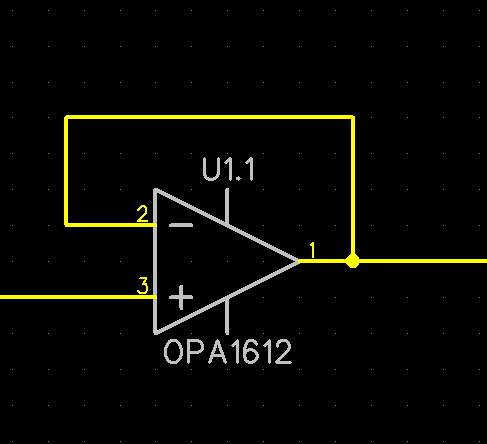
Input Current Noise Density
Share
One of the new features in the QA401 1.6 release is the ability to display noise density. A user was curious why the noise density calculations couldn't be verified using large input resistors.
The short answer is because of the input buffer opamp's noise current density.
The opamp used for the QA401's input buffer is an OPA1612. It's very likely the best audio opamp out there today. So good, in fact, that AKM's latest reference design for the AK4493 uses OPA1612s. This comes after AKM has used LME or NE5532 flavors for the last decade or so. So, yes, it's that good and this shift says a lot about the performance of the OPA1612.
The OPA1612 is a bi-polar device. Bi-polar devices have great input voltage noise specs, but the input current noise spec is a bit high. Conversely, a CMOS opamp has a voltage noise that is 5-10X worse than that of bi-polar. However, the input current noise of CMOS is almost non-existent. So, you end up with a general rule that says if your source impedance is lower and noise is important, then you opt for bi-polar opamps. And if your source impedance is higher and noise is important, then you opt for CMOS opamps.
Let's take a look at this in more detail using the new spectral noise density feature in the 1.6 release. We know we're in this mode of operation because the Y axis is now reporting units in in "rthz" or √Hz.
On the QA401, with the inputs shorted, the noise is about -115 dBV in 20 KHz. We can read off the plot below that the noise density at 1 KHz is about -157 dBV/rthz, which is about 14 nV/rthz. In a 20 KHz bandwidth, this would be 2 uVrms or about -114 dBV. This agrees reasonable well with the -115 dBV RMS figure shown in the top-left of the graph. Internally in the QA401 software, these figures are calculated very differently, so the cross-check is re-assuring when verifying new software features in the 1.60 release.

Note that when we're in noise density mode, the noise floor remains the same regardless of FFT bin depth. In the plot below, the FFT has been increased to 256Kpoints. The noise floor will also remain the same when you select different windowing options.

The fact that the noise floor hasn't changed is probably a surprise to anyone who is used to changing the FFT resolution on any signal analyzer and seeing the noise change.
But it also gives a hint about what is so valuable about the noise density mode of operation in spectrum analyzers: The noise remains the same regardless of FFT size and windowing. Why not use this mode all the time? Well, in this mode the amplitude of tones will change as you switch FFT size. Thus, it's very important to be in the correct mode for the types of measurements you wish to make. Otherwise, your measurements won't make sense.
Verifying Noise
OK, but back to the question asked about verifying noise and the different op-amp types. How about just connect a 100K resistor and see if the noise of the resistor matches the theory?
The issue is that with a bi-polar opamp, that gets a bit challenging because the current noise of the opamp through the very-high resistor value overshadows the noise of the resistor.
Consider the input impedance of the QA401 is 100K on each input. If we short one of the inputs and leave the other floating, our spectrum looks as follows:

We can read a noise density at 1 KHz of roughly -128 dBV/rthz.
But the noise in a 100K resistor should be -148 dBV/rthz--you can verify this using any on-line resistor noise calculator. This is a 20 dB difference, which is huge! But this gap comes from the current noise contribution of the opamp.
We'll not run through all the math here, but in summary, a 100K input resistance applied to a non-inverting OPA1612 opamp with 1.1 nV/rthz voltage noise and 1.7 pA/rthz current noise gives 177 nV/rthz of noise, which is -135 dBV/rthz. Not exact, but in the ballpark of what we measure below. The 1.1 and 1.7 figures used are listed by TI as "typical" means they could actually be a bit better or worse.
If we add another 100K across the input, for a total input Z of 50Kohms, we see the noise drops about 6 dB, which is about the same drop we see from the raw calcs using voltage and noise currents. And thus that makes sense too.

Summary
The QA401 input opamp excels at delivering low-noise when source impedances are low. But as source impedances climb, the current noise contribution of the buffer opamp begins to dominate. While this is a normal tradeoff required in all pre-amp topologies today, it does explain clearly why you cannot put a 100K resistor across the input and expect the measure the noise of that resistor exclusively.
Happy testing!
